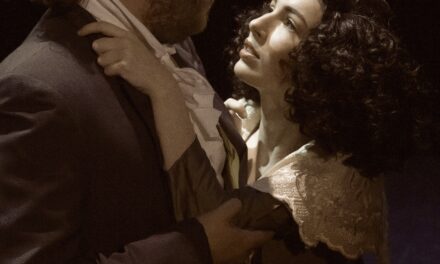The Chapel Hill Philharmonia‘s Hill Hall program featured pieces with a common theme of “hidden identities.” Each composer whose music was performed conveyed something hidden through his work, whether it was details of a story, cultural references, or personal relationships. This theme successfully connected the varied program.
The first performance, Overture to Der Freischütz, Op. 77, by Carl Maria von Weber, begins slowly and ominously. The first theme, a stately melody played by the horns, sets the scene in a regal forest. The opera for which this overture was written takes its story from a supernatural German folktale, much of which is set in the woods. To emphasize the picture of hunting, solemn drum beats are played several times. Following a sudden escalation, with furious string rhythms and a strong brass presence, a gentle melody appears, perhaps to represent a female presence in the opera’s story. The Philharmonic combined this series of polyphony well. At the conclusion of the overture, this melody occurs again, but this time it is played jubilantly, supported by the whole orchestra to create a triumphant ending.
Typically, the texture of Tchaikovsky’s Violin Concerto in D major, Op. 35, is that of an exchange between the orchestra and the violin soloist. This places a huge responsibility on the soloist because the energy created by the orchestra must be sustained throughout the concerto. This was no concern, however, because soloist and concerto competition winner Carolyn Chang completely rose to the challenge in the work’s first movement. After a short orchestral introduction, with string and woodwind melodies on a decrescendo, Chang created a mesmerizing atmosphere immediately with the meticulous rise and fall of her phrases. When the orchestra came in, she played in tandem with the sounds elicited from the orchestra by conductor Donald Oehler, who shaped the dynamics of the orchestra. The overall tone of the concerto is slightly mournful yet proud. A triumphant procession-like section occurs in the middle, then making way for the soloist. The last and longest of Chang’s solo sections was truly awe-inspiring. She tackled the extremely difficult passages and techniques, making them look effortless to the audience. Chang successfully played a series of impossibly high notes, effectively communicating a sense of the dramatic. After the orchestra’s celebratory re-entrance and conclusion, the audience immediately gave a standing ovation.
Elgar’s fascinating Variations on an Original Theme for Orchestra, Op. 36 (also known as “Enigma”), concluded the concert. First, the theme is introduced, supported by pulsing string chords. As more instruments are added, the texture becomes more complex but remains mysterious and questioning throughout, setting the scene for the following variations. Each variation is based on someone in Elgar’s life, varying in levels of importance, and represented in the title by their initials. First is Elgar’s wife, C.A.E., represented by a vivacious pattern repeated multiple times by different instruments. A sustained and resonant low bass juxtaposes the sense of nobility. The next two movements are more like playful caricatures of Elgar’s friends mimicking specific sounds, such as chromatic piano scales or a bicycle bell. An extremely short but energetic movement accurately describes a man who always slammed doors, communicated by sudden dynamic shifts of the orchestra. To mimic R.P.A., who often switched back and forth between serious and witty conversation, mournful strings abruptly give way to dancelike sections of playful woodwinds. The Philharmonia adeptly navigated the tempo and meter shifts, communicating Elgar’s intention for the movement. “Ysobel” is represented by a lyrical melody, contrasted immediately by “Troyte,” which features a raucous and fast-paced brass melody.
The eighth movement is a gentle portrait of a pastoral lifestyle, leading directly into the most famous of the variations, “Nimrod”. This movement is dedicated to Elgar’s closest friend, August Jaeger. The melody is noble yet passionate, increasing in volume magnificently with each phrase. The Philharmonia navigated the dynamics well, creating a moving atmosphere. Series of suspensions add tension to the overall melody. The woodwind section especially shone in this movement, playing a great part in the growth of the melody. As the volume reaches its highest point, the orchestra quickly draws back to gently conclude the movement.
The finale, based on the composer himself, is boisterous and triumphant. It crescendos from the beginning, leading into regal-sounding full chords. In the middle, suggestions of the melodies from both the C.A.E. and Nimrod movements appear, ultimately building to a joyful finale.












